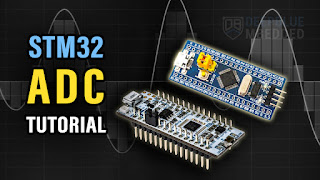What is a Look-Up Table (LUT) in an FPGA, and how does it work?
A Look-Up Table (LUT) in an FPGA is a fundamental building block used to implement combinational logic (logic that depends only on the current input values). It acts as a programmable truth table, allowing the FPGA to emulate virtually any Boolean logic function (e.g., AND, OR, XOR) based on how it is configured. Here’s a detailed explanation:
What is a LUT?
- A LUT is a small, fast memory block that stores precomputed output values for all possible combinations of its inputs.
- In FPGAs, LUTs are the core of Configurable Logic Blocks (CLBs), which form the programmable fabric of the device.
- A LUT with
ninputs can implement any Boolean function of thosenvariables. For example: A 2-input LUT can emulate AND, OR, NAND, XOR, etc.
A 4-input LUT (common in modern FPGAs) can implement more complex functions.
How Does a LUT Work?
A LUT behaves like a truth table stored in memory. Each combination of inputs corresponds to an address in the LUT’s memory, and the stored value at that address is the output.
For example, a 3-input LUT has possible input combinations. Each combination maps to a 1-bit output stored in the LUT’s memory.
2. Programmability:
When you program the FPGA, the LUT’s memory is loaded with the desired truth table values (0s and 1s) to define the logic function.
Example: To implement an AND gate with a 2-input LUT:
Inputs
00→ Output0Inputs
01→ Output0Inputs
10→ Output0Inputs
11→ Output13. Physical Implementation:
A LUT is typically implemented using SRAM cells (static RAM). Each SRAM cell holds one bit of the truth table.
When inputs are applied, they act as an address to select the corresponding SRAM cell’s value as the output.
Key Features of LUTs
A single LUT can emulate any logic function within its input capacity. This makes FPGAs reprogrammable for different applications.
2. Size and Complexity:
The number of inputs (
n) determines the LUT’s complexity. For example:A 4-input LUT has memory cells.
A 6-input LUT (common in modern FPGAs) has cells.
Larger LUTs can implement more complex logic but consume more FPGA resources.
3. Combined with Flip-Flops:
In practice, LUTs are paired with flip-flops (registers) in CLBs to implement sequential logic (logic with memory, like counters or state machines). The LUT handles combinational logic, while the flip-flop stores the output for clocked operations.
Example: Implementing Logic with a LUT
Suppose you want to create a 3-input XOR function ():
The truth table has entries. The LUT is programmed to output
1when there’s an odd number of 1s in the inputs:000→0001→1010→1011→0... and so on.
When the FPGA is configured, these values are loaded into the LUT’s memory. During operation, the inputs select the appropriate memory cell, and the output is produced instantly.
Why LUTs Matter in FPGAs
Reconfigurability: LUTs allow the same FPGA hardware to be reprogrammed for entirely different applications by changing their stored truth tables.
Parallelism: Thousands of LUTs work in parallel, enabling FPGAs to perform highly concurrent operations.
Efficiency: LUTs balance flexibility and resource usage, making FPGAs suitable for prototyping, custom hardware acceleration, and adaptive systems.
Limitations
Resource Constraints: Larger logic functions require cascading multiple LUTs, which increases latency and resource usage.
Propagation Delay: While LUTs themselves are fast, the programmable interconnects between them introduce delays that affect overall performance.
In summary, a LUT is the FPGA’s "Swiss Army knife" for logic implementation. By storing truth tables in memory, it enables the FPGA to mimic virtually any combinational circuit, forming the foundation of its reprogrammable nature.




评论
发表评论